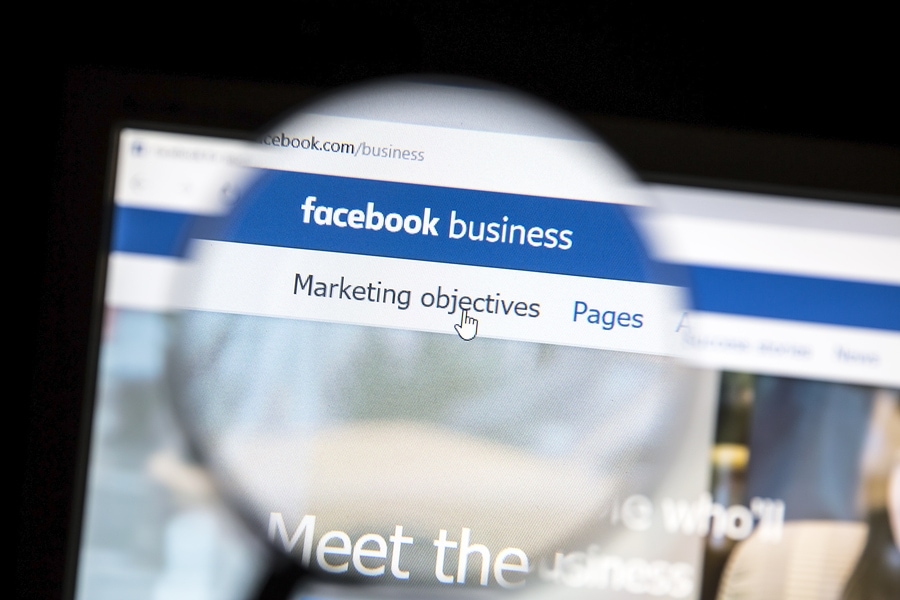The case for Facebook marketing has been made many times on these pages, but it’s one thing to understand the Facebook opportunity—and another thing to execute it. Yes, Facebook display ads and sponsored posts can do everything from boosting your site SEO to raising conversions and sales.
The “what” of Facebook advertising is easy; it’s the “how” that’s a bit more tricky. One of the first stumbling blocks marketers can run into is how to handle Facebook ad text and imagery. Ads were not an original part of the Facebook user experience — and many of the initial ad requirements have put that UX above what makes the most sense for advertisers.
To Text or Not to Text?
Facebook would have us believe that their users prefer ads with little to no text on the image asset itself. The idea is that a news feed or display ad should almost feel like an organic social post. Indeed, a real-life test by sketchDeck found the cost per click for some no-text ads was about 6% less. And Facebook had been quite specific about how much text could appear on an ad image, having a strict rule at one point that it had to be less than 20% of the image area.
However, marketers know text copy to be an important part of any advertisement. A brand name, keyword, or tagline on the image asset itself can have a positive ROI. And Facebook finally relented last year, relaxing it’s 20% rule somewhat, with somewhat being the key word.
What Counts as Text on Facebook
Now, what counts as text on an image isn’t as strictly enforced, but there’s still a rule. The social giant has a four-level scale, from “OK” to “Low” to “Medium” to “High,” with the reach of an ad being increasingly throttled when an automated algorithm decides it’s got too much text.
Thus, the rule is still sort of a rule, even a year later, that marketers have to navigate. And to complicate matters more, some text counts as text and some doesn’t — book covers, movie posters, legalese, product images, app screenshots, and such are exempt. Though again, you’re at the mercy of the algorithm to put you in the right text category.
So, those are the rules. However, I’m aware that it can be hard to visualize what a good ad that follows these rules looks like. Sometimes you have to see it in the wild. I’ve put together a quick lookbook of right column ads that have been served to me over the last few weeks, to get your mind thinking about the possibilities.
A Lookbook to Get You Started
Here are nine real-life ad examples to inspire you.
First, there’s always the option of no text, like in this ad for a freight service.
Or very little text. This medical class-action ad only puts the keyword phrase on the image.
An Amazon ad uses only its logo and product category over a couple of product images.
This ad for web development services uses a bit more text with its tagline, but the effect is still minimal.
This Verizon ad has a lot of words on the page, but also still manages to be very minimal. And remember, the fine-print legal text doesn’t count against you.
This candy ad is probably one of the one of the most eye-catching, and as far as the algorithm is concerned, it contains no text — product packaging is exempt.
Here’s a good example of a very clickable discount offer that catches the eye without being visually overbearing.
Of course, you can use Facebook ads to push your content marketing pieces as well. Here’s an example that uses minimal text.
And here’s another content post that uses somewhat more and bigger text, without suffering from the algorithm limits.
Next Steps
Facebook marketing is a key part of the digital marketing landscape today, and it’s not going away anytime soon. There is a great opportunity for businesses large and small to raise brand awareness, convert, close, and retarget your audience — there’s just a trick to doing it well.
There’s plenty more to know, so the next step for novice Facebook marketers is more reading. I recommend checking out Buffer’s newly updated Facebook ad specs guide, HubSpot four-step formula for effective Facebook ads, and Copy Hackers complete guide to writing Facebook ads, including tips for headlines, descriptions, and sponsored post copy.
